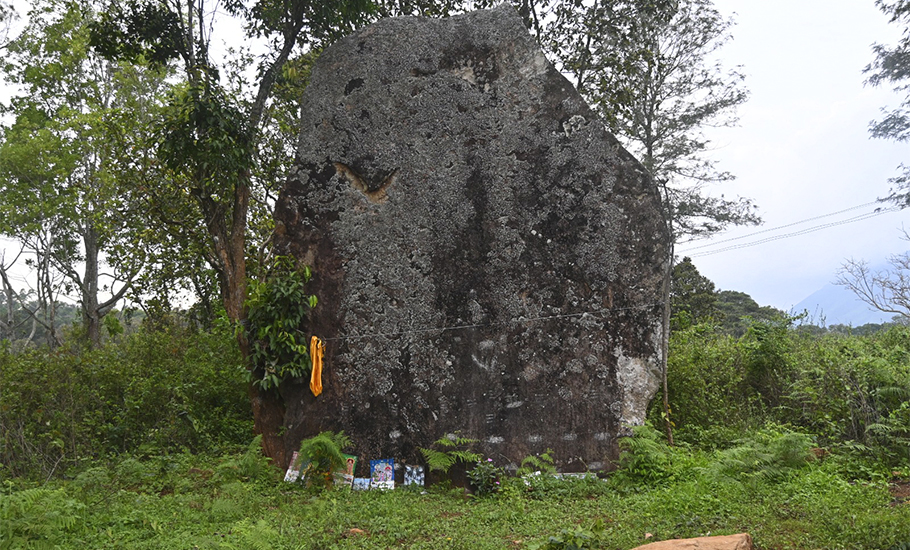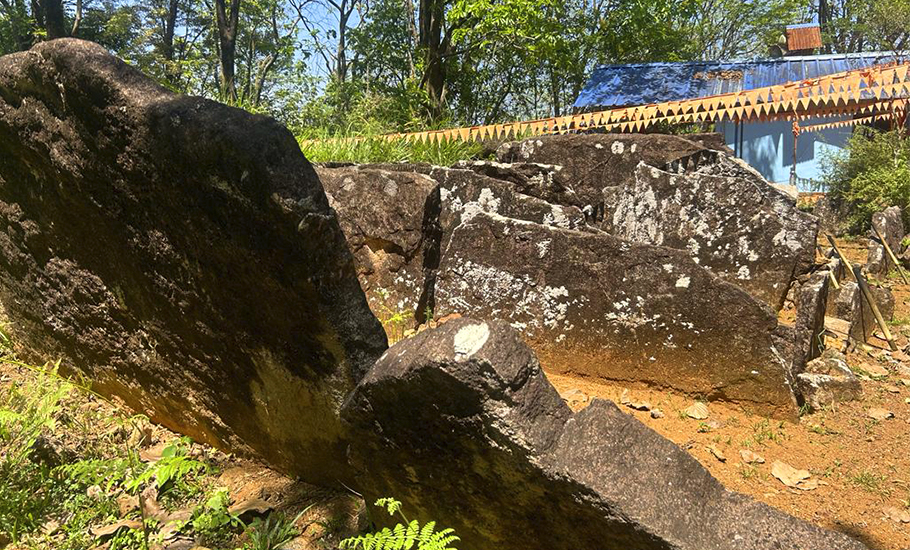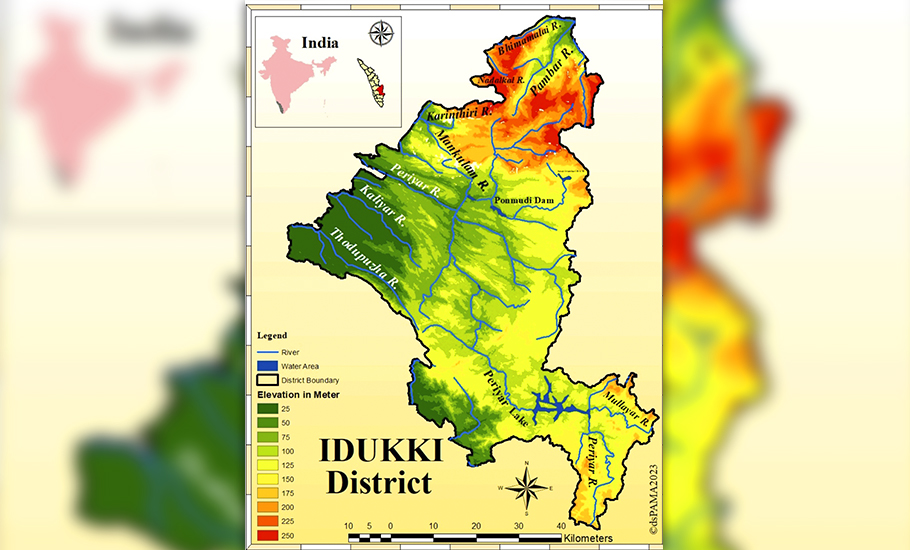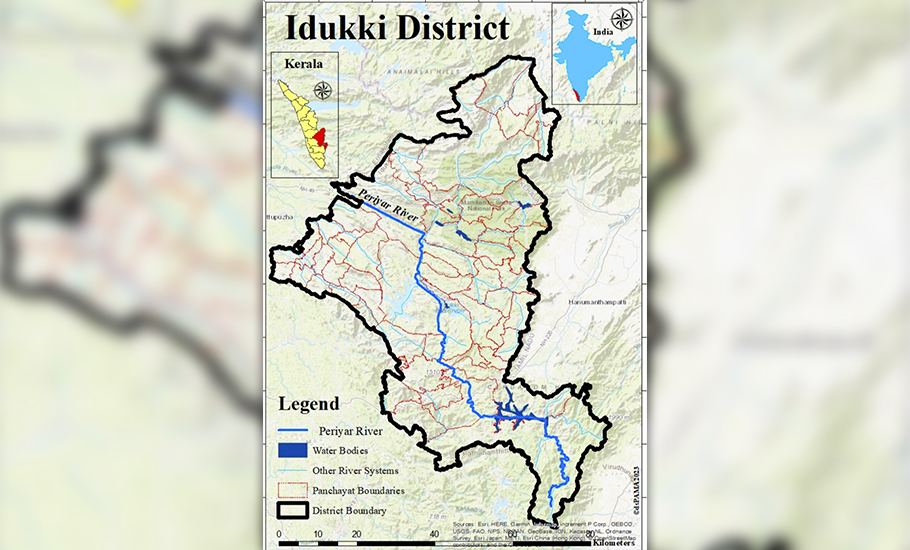
- Home
- News
- Analysis
- States
- Perspective
- Videos
- Education
- Entertainment
- Elections
- World Cup 2023
- Features
- Health
- Business
- Series
- Economy Series
- Earth Day
- Kashmir’s Frozen Turbulence
- India@75
- The legend of Ramjanmabhoomi
- Liberalisation@30
- How to tame a dragon
- Celebrating biodiversity
- Farm Matters
- 50 days of solitude
- Bringing Migrants Home
- Budget 2020
- Jharkhand Votes
- The Federal Investigates
- The Federal Impact
- Vanishing Sand
- Gandhi @ 150
- Andhra Today
- Field report
- Operation Gulmarg
- Pandemic @1 Mn in India
- The Federal Year-End
- The Zero Year
- Premium
- Science
- Brand studio
- Home
- NewsNews
- Analysis
- StatesStates
- PerspectivePerspective
- VideosVideos
- Entertainment
- ElectionsElections
- Sports
- Loading...
Sports - Features
- BusinessBusiness
- Premium
- Loading...
Premium

From Vaigai to Periyar: Why an upcoming excavation on the upper Periyar basin in Idukki is significant

A couple of weeks ago, archaeologists of the PAMA Research Institute visited the upper Periyar basin in the Idukki district of Kerala, a region which is known for its Iron Age remains dating back to 1000 BC. Historians believe that a major east-west highway once passed through the Idukki zone, connecting Alagankulam at the mouth of river Vaigai on the Bay of Bengal and Pattanam (Muziris),...
A couple of weeks ago, archaeologists of the PAMA Research Institute visited the upper Periyar basin in the Idukki district of Kerala, a region which is known for its Iron Age remains dating back to 1000 BC. Historians believe that a major east-west highway once passed through the Idukki zone, connecting Alagankulam at the mouth of river Vaigai on the Bay of Bengal and Pattanam (Muziris), an ancient port at the mouth of river Periyar on the Arabian Sea.
The sites which have been identified on the Vaigai river course, including the Pandya capital city Madurai, trade centres, industrial sites, Jain monuments and Roman and Punch Marked Coin (PMC) hoard sites and memorial stones, stand testimony to the fact. With the recent excavations at the Keeladi site, the Vaigai-Periyar cultural and trade corridor in peninsular India and beyond has become more significant. The Idukki region of Kerala provided the bulk of the forest goods such as pepper, cardamom, medicinal plants, ivory and many other products which accelerated both domestic and trans-continental trade activities during the early historic phase 300 BC to 500 AD. The Periyar River valley has witnessed thousands of years of human history, a fact that has been established with the archaeological excavations at Pattanam since 2006-07. To rediscover the antecedents of Tamil classical culture in its global context, historians believe, the material evidence from the Idukki district could be critical.

The year-long documentation and analysis will be organised in consultation with the Archaeological Survey of India (Thrissur Circle), Idukki district administration, local self-government bodies, and other institutions having collaborations with PAMA, a transdisciplinary research collective, located at the Pattanam archaeological site in Ernakulam. There will be three phases. In the first phase of the project, the archaeological and ethnoarchaeological vestiges of material remains and those traceable memory indicators of the ancient settlements will be documented through trained volunteers in each ward of the 52 panchayaths in the district.
In the second phase, selected locations will be identified for trial excavations and documentation. This phase will also explore the remains of ancient habitation, and in ethnoarchaeological research, preserved aspects of ancient crafts, lifestyle, customs, etc. as analogies for archaeological finds and information from written sources. In the third phase, efforts will be made to conserve the crucial sites in collaboration with the state archaeology department, respective local self-government institutions or nearby educational institutions for future full-scale excavations. This phase will ensure the post-exploration studies and preparation and publication of the explorations report.
The pedestrian survey is a data collection method where individual investigators traverse assigned areas observing and documenting specific sets of data. The survey will be conducted in a village-to-village format within the wards of the LSGs as basic units of exploration procedure. The trained volunteers assigned to one or more wards in each Panchayat will collect data by engaging in a pedestrian survey equipped with a printed questionnaire, notebook, paper map of investigated Panchayat or with a digital PAMA App.
“There are more than 850 wards in the district, which we have to cover one by one. The volunteers are expected to walk through the plots, fields, forests, or hills of the ward to identify and document the materials and memories associated with archaeological remains. Ancient-looking pottery fragments are the major clue each investigator has to locate on the digital/paper map, note in the notebook (with a short description, categorization and GPS grids) and scan for in each plot of the Ward. The same procedure will be used for vestiges and memories of burial urns, dolmens, umbrella stones, menhirs and other such iron age structures, stone hand-axes, pestles, grinding stones, beads made of glass and coloured stones, iron slags, and so on,” said Kevin Viji, coordinator of the Idukku excavation project (2023-24).

To elicit memories from older generations, the volunteers will have to engage in discussions and ask questions from the prepared questionnaire. “Besides the elders of the ward, the investigators will also focus on the memory mapping of specific groups occupied in well-digging, agriculture, sand mining, construction, etc. who may have knowledge about the subterranean aspects of the area. They might bring out good information on the ancient materials they have come across while digging or while undertaking cultivation or house-building or various development activities,” he said. Scholars KRK Reddy (ASI), K Rajan, Marek Wozniak (Polish Academy of Sciences) and Nicholas Bartos (University of Stanford) will be the consultants for the project.
Investigators in each ward are expected to look for any sort of information on the ground as well as in the memory of the local community. “They will also document photographically, descriptively and on video all interesting aspects of the traditional way of life, work, and culture of the local traditional communities of the region (architecture, household equipment, tools, farming techniques, medicine, a gathering of “forest goods” etc,” said a release from PAMA. “During the second phase, the selected locations will be explored further and trial excavations may be conducted with a professional team of archaeologists and other allied disciplines. The result of the pedestrian survey at this phase will be evaluated and investigated further to map the indigenous practices and the cultural geography of the district.”
Pattanam, a mound on the banks of the Periyar river in Kerala, is considered a part of the ancient port called Muziris or Muciri Pattinam. The port city, according to historians, might have played a significant role in the trade and cultural exchanges between India and the Middle East, North Africa and the Mediterranean regions about 2000 years ago. A huge volume of (1.3 lakh) artefacts made of iron, copper, gold, lead, glass, precious stones and terracotta have been unearthed since the excavation began in Pattanam in 2006-07. Archaeologists have found objects such as human bones, storage jars, gold ornaments, beads, utilitarian objects, early Chera coins and wharf with bollards on the site. At least 45 lakh Indian-made pottery assemblages and 1.5 lakh pottery pieces of the Chinese, South Arabian, Red Sea and Mediterranean provenance have also been excavated from the site so far.
“The Pattanam evidence suggests the peak phase of Muziris port, located on the Periyar delta was from 100 BC to 300 AD. The Idukki region or the upper Periyar basin falls under the mountainous region popularly called Kurinji thinai, an ecozone, in classical Sangam literature which might have played a critical role in supplying the resources which made Muziris the ‘first emporium of India.’ A major east-west highway passed through the Idukki Kurinji zone connecting Alagankulam at the mouth of river Vaigai on the Bay of Bengal and Pattanam at the mouth of river Periyar on the Arabian Sea. We will know more about it once the excavation progresses,” said P J Cherian, director of PAMA.

The Keeladi excavation was a turning point in the history of Tamil Nadu. “To establish the connections and links that once existed, we need to do a proper excavation in the region of Idukki with the support of the Tamil Nadu archaeology department. PAMA has signed a MoU with the state archaeology department of Tamil Nadu by which they are collaborating in the Idukki exploration project providing technical and expert assistance,” he added. The first phase of the Idukki excavation project will begin in May.

